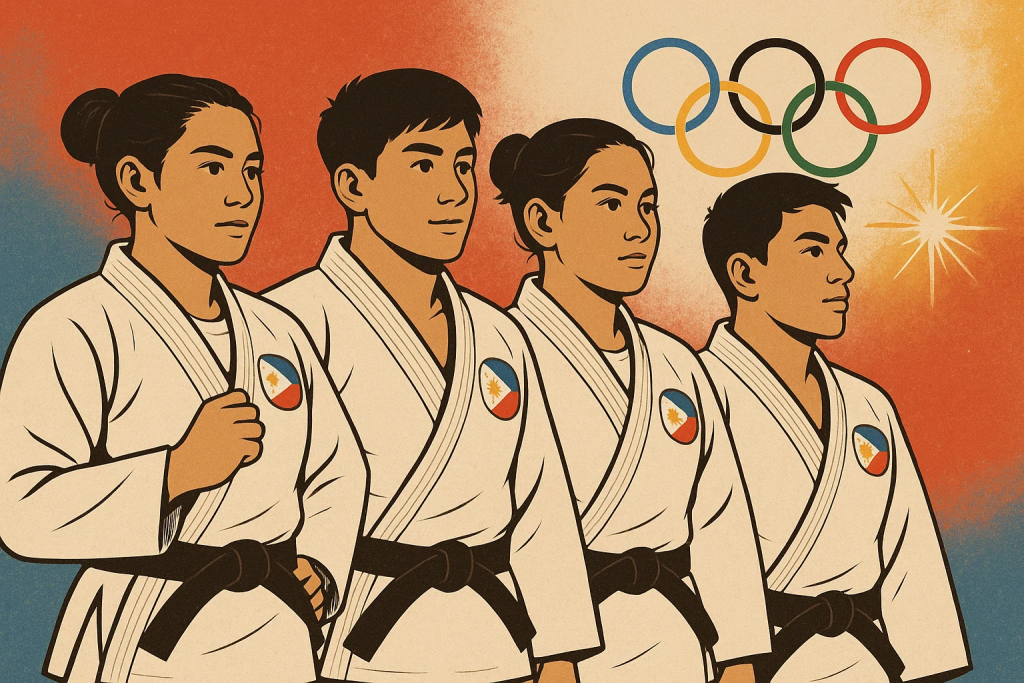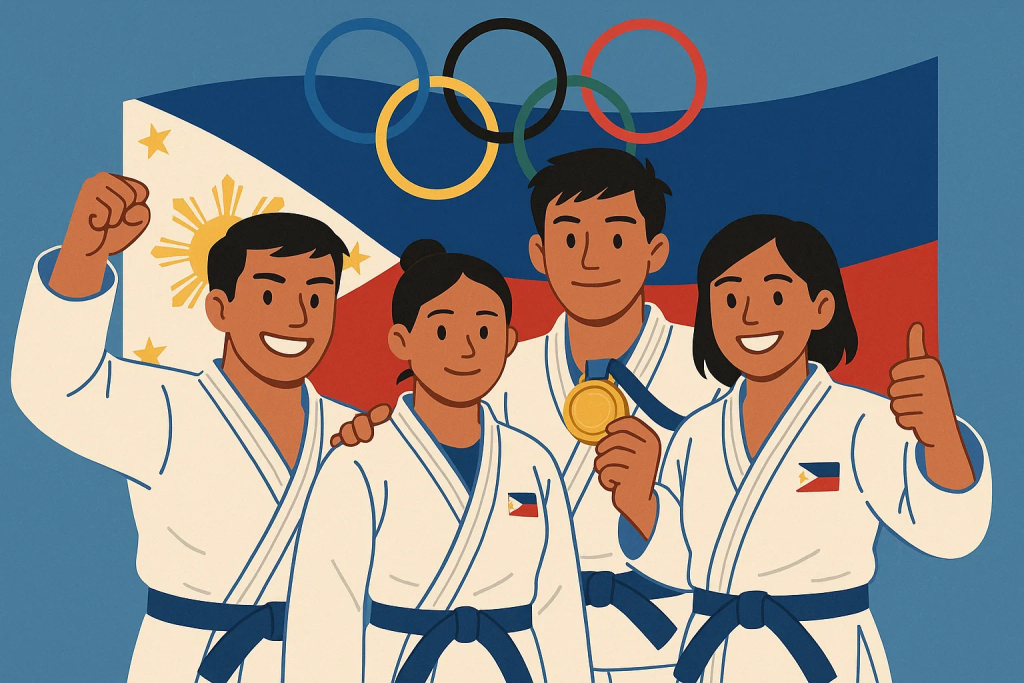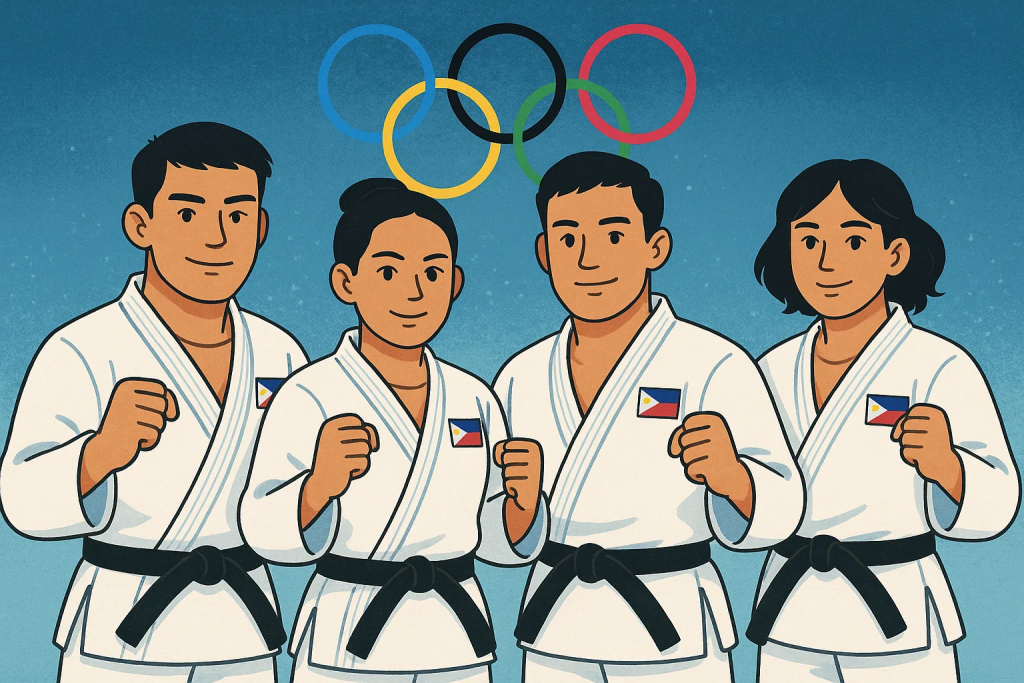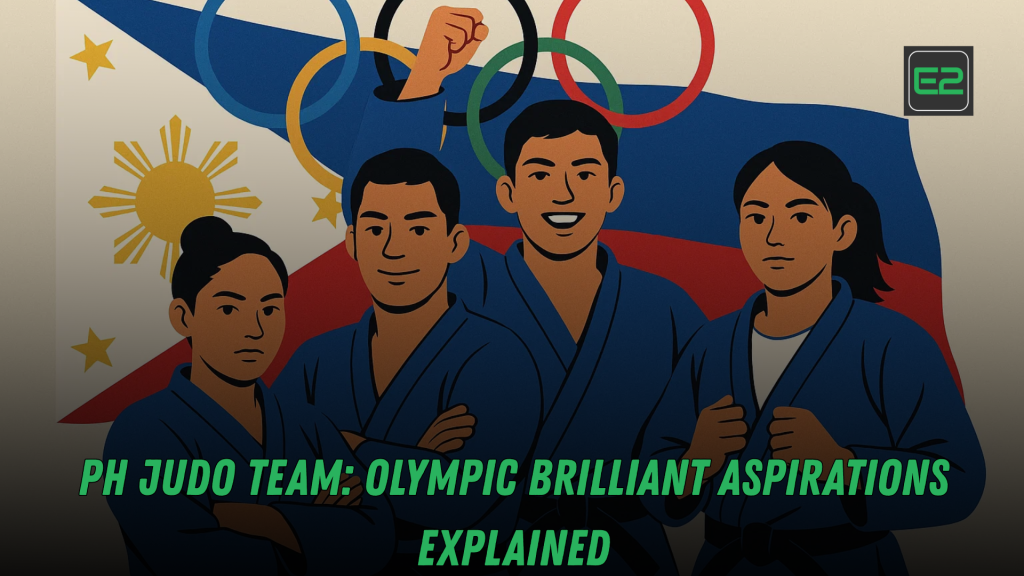Table of Contents
- The Philippine Judo Team is chasing an Olympic berth through the IJF World Ranking List, continental quotas, and strategic tournament selection.
- Success hinges on smart periodization, international training camps, sports science (S&C, recovery, injury prevention), and data-led scouting.
- You can support by following official events, sharing updates, joining grassroots clubs, and backing athlete funding drives.
- This guide breaks down the Olympic qualification system, the team’s preparation pillars, and a 12-month campaign plan any national program can use—plus FAQs.

Why the Olympics are a realistic target for PH judo now
Judo is one of the most demanding Olympic sports: weight-class strategy, global depth, and tiny margins decide careers. For the Philippines, the pathway is challenging—but more structured and transparent than ever:
- Ranking-based entry rewards consistency across a season, not just one event.
- Continental quotas give Asia-based judoka an additional lane to qualify if they’re the top-ranked athlete from a nation not already in via direct ranking.
- Mixed Team Event relevance boosts federation investment in multiple weight categories rather than a single star.
Put differently: with a clear calendar, well-timed peak, and enough fights vs. ranked opponents, Filipino judoka have a realistic shot at stepping onto the tatami at the Games.
Olympic qualification in judo, explained in plain English
Note: Each quadrennium the IJF publishes the exact rules and dates. The framework below reflects common, stable features so you can grasp the big picture.
1) Direct qualification via IJF World Ranking List
- Athletes collect points from Grand Slams, Grand Prix, Continental Opens, Continental Championships, and the World Championships.
- Higher-tier events = more points. Worlds and Grand Slams carry the largest multipliers; GP and Continental events are vital for volume and seeding.
- After the qualification window closes, the top-ranked athletes per weight (with a maximum number per NOC) receive direct invitations.
2) Continental quotas (Asian slot)
- If an athlete isn’t in via direct ranking, they can still qualify as the top eligible judoka from their country within Asia (subject to category limits).
- This rewards regional excellence and reduces travel-budget disparities.
3) Host, Tripartite, and reallocation
- A small number of places may be set aside for host nation representation or universal participation.
- Reallocation can occur if qualified athletes withdraw or a nation declines a spot.
4) National selection layer
- Even if multiple athletes hit thresholds, the NOC/federation chooses who fills the nation’s quota. That internal selection considers health, head-to-head results, medal potential, and readiness.
Key takeaway: The PH Judo Team’s Olympic strategy must align event planning, points accumulation, and internal selection criteria—all while staying healthy enough to fight often.
Weight classes and PH depth strategy in judo
Most NOCs that qualify sustainably don’t depend on one superstar. They cultivate overlapping contenders across several categories, such as:
- Women: –48kg, –52kg, –57kg, –63kg, –70kg, –78kg, +78kg
- Men: –60kg, –66kg, –73kg, –81kg, –90kg, –100kg, +100kg
A Philippines-first lens suggests two simultaneous tracks:
- Medal-probable categories with current top performers getting premium support: travel to Grand Slams, world-class camps, and dedicated S&C.
- Development categories building for the next quad: Continental Opens, regional championships, and exposure to international randori blocks.
This twin-track system maintains near-term qualification while investing in long-term podiums.
The campaign calendar: how to map a 12-month push
A smart Olympic campaign behaves like a start-up: resource-constrained, focused, data-driven.
Phase A — Foundation (Months 1–3)
- Medical screens (blood work, movement screens, skinfolds or DXA if accessible).
- S&C baseline: strength balance (push/pull, squat/hinge, unilateral deficits), aerobic base (time-to-exhaustion), alactic repeat power.
- Technical audit: gripping systems (aiyotsu/kenka-yotsu), tachi-waza staples (uchi-mata, seoi-nage, o-soto gari), and newaza finishes (osaekomi, shime-waza, kansetsu-waza).
- Match database build: last 30–50 fights per athlete, scoring patterns for/against, shido triggers.
Phase B — Points Harvest (Months 4–8)
- Enter Continental Opens and Grand Prix to stack matches, improve seeding, and test tactics.
- One Grand Slam shot during this block if metrics say “ready”: the goal is to win early rounds and snag big-event points.
- Camp sandwiching: slot a 7–10-day international camp right after events to absorb lessons and get high-quality randori.

Phase C — Peak & Protect (Months 9–12)
- Selective events only: quality > quantity. Pick tournaments that maximize draw quality and travel recovery.
- Tapering before the biggest event: reduce volume, keep speed, maintain grip strength and pulling power.
- Contingency: a backup event two weeks later in case illness/injury forces a scratch.
What elite preparation looks like (and how PH can scale it)
1) Technical–tactical layers that win at IJF level
- First-contact wins: dominate grips in the first 5–8 seconds; pre-set sequences vs. right/left stance.
- Two-speed offense: one “power throw” family (e.g., uchi-mata/o-uchi) and one “speed throw” (drop seoi, kata-guruma variations).
- Newaza conversion: immediate transition plan after any throw—pin chains (yoko-shiho → kami-shiho), choke entries when opponents turtle.
- Golden-score playbook: conserve energy, avoid low-EV attacks, force shidos tactically with edge pressure and realistic attacks.
2) Strength & Conditioning, Filipino context
- Strength blocks (2× weekly in heavy phases): front squat / trap-bar deadlift, horizontal push–pull, hip hinge, anti-rotation core.
- Power maintenance (in-season): loaded jumps, med-ball rotational throws, resisted band uchi-komi for speed.
- Grip endurance: gi-towel hangs, rope pulls, partner sleeve drags; test every 4–6 weeks.
- Conditioning: mixed alactic intervals (6–10s sprints) and specific judo circuits (uchi-komi density, 4×4 randori blocks).
3) Recovery & injury prevention
- Shoulder and elbow: rotator cuff work (ER/IR), scapular stability, eccentric pull-ups; elbow flexor–extensor balance.
- Knee & ankle: single-leg strength, landing mechanics, tibialis/soleus work; medial-lateral hops to bulletproof change-of-direction.
- Back & neck: anti-flexion/extension carries, neck isometrics; safeguard against hard landings.
- Monitoring: session RPE, sleep hours, wellness check (DOMS, appetite, mood). Recovery toolkit: sleep hygiene, cold showers in heat, compression when flying.
4) Weight management the right way
- Set weight windows (off-season body mass vs. competition mass).
- Gradual cuts: 0.5–0.8% body mass per week; no last-minute dehydration gambles.
- Fight-week fueling: steady carbs, lean proteins, sodium control, and rehydration plan post-weigh-in.
- Red flags: repeated sauna cutting, dizziness, poor sleep—performance will crash and injury risk spikes.
The data advantage: scouting that punches above our budget
You don’t need a massive analytics department—just consistency.
- Video tagging: label each exchange (grip win/loss, attack type, score, shido).
- Shido map: when do we draw penalties? (edge, passivity, false attack) Build sequences to replicate those moments.
- Opponent fingerprints: top three throws they score with; late-fight tendencies; right-left win rate.
- Ref patterns: every ref is human—understand their passivity thresholds and edge management to adjust pacing.
Outcome: smarter tactical prep, better warm-up scripts, and higher confidence in the tunnel.
Funding, governance, and sustainable growth
Olympic success is never only about athletes. It’s also budget and policy:
1) Prioritize travel that returns points
- Grand Slams are sexy, but if early exits are likely, a Grand Prix + Open double may yield more points and matches.
- Choose events near training partners (e.g., clusters where you can tack on international camps), squeezing two benefits from one airfare.
2) Transparent selection policies
- Publish criteria: ranking thresholds, fitness tests, attendance, behavioral expectations (weight management, professionalism).
- Transparency reduces friction and builds trust among athletes, parents, and sponsors.
3) Partner with universities & private gyms
- Tap S&C labs, physiotherapy programs, and sport science interns for testing and monitoring.
- Encourage private dojos to adopt the national S&C and injury-prevention mini-curriculum; build a shared baseline nationwide.
4) Community and diaspora
- Filipino diaspora judoka and coaches can host short-term camps or sparring weeks abroad—hugely valuable in a ranking chase.
- Organize crowdfunding drives with clear budget lines (entry fees, flights, physio, accommodation).
Grassroots to elite: the pipeline matters
An Olympic berth is easier when the pipeline is flowing:
- Mini-judo & school programs (7–12 years): games, ukemi (safe falling), balance, and fun first—no weight cutting, ever.
- Cadet & junior pathway: national camps, regional exchanges, first international exposure to reduce stage fright later.
- Coach development: annual clinics focusing on injury prevention, youth pedagogy, and competition periodization.
- Referee depth: stronger officials improve domestic matches and align them with IJF standards.
The Mixed Team Event: why breadth helps PH
The Olympic Mixed Team format combines several men’s and women’s categories. Even if a nation qualifies few individual slots, versatility across categories can matter for future cycles. Building both sides of the roster (men & women) improves long-term odds, nurtures a broader fan base, and attracts sponsors who love team narratives.
Media & fan engagement: turning support into performance
- Storytelling: short features on athletes juggling studies, work, and training.
- Match-day explainer clips: basic judo rules, scoring, and “what to watch for” in a specific opponent.
- Results with context: don’t just post “lost R32”—explain the learning (first-grip lost, shido late, fitness improved), and what’s next.
- Fan calls-to-action: ticketed exhibitions, open randori days, and meet-and-greets raise funds and widen the community.
A practical 6-week microcycle (in-season example)
For illustration—coaches should tailor to athlete level, recovery, and event dates.
Week 1–2: Density build
- Mon: Technical (grip sequences) + S&C (lower-body strength)
- Tue: Randori (4×5 min), newaza chains
- Wed: Mobility + power (jumps, med-ball) + situational randori
- Thu: Tactical session (edge pressure, shido traps)
- Fri: S&C (upper-body push/pull, grip endurance) + light randori
- Sat: Active recovery (swim/bike), video review
- Sun: Off / sleep focus
Week 3: Competition taper
- Lower randori volume, keep speed & grip power; travel & weigh-in protocols.
Week 4: Competition
- Pre-fight warm-up script (3×90s uchi-komi bursts, 30s band pulls), post-fight debrief.
Week 5: Reentry
- 48h recovery, gentle movement, physio, nutrition reset, video analysis.
Week 6: Targeted rebuild
- Fix tactical gaps found in competition; set micro-goals for the next event.
Nutrition and heat management (SEA reality)
- Everyday fuel: rice/whole grains, lean proteins (fish/chicken), vegetables, fruit; 20–25 g protein each meal; hydration 30–40 ml/kg/day baseline.
- Training days: add pre-randori carbs (banana + toast/honey), intra-session sips (water + electrolytes), recovery snack (carb + protein).
- Weight weeks: keep fiber moderate 48h before weigh-in; never dry-sauna crash cuts—strength and cognition plummet.
- Heat: cool towels, fans, shade; if training outdoors, schedule early morning/evening; ice slurries can reduce thermal strain before hard sessions.
What “success” looks like beyond medals
- Injury-free starts across a season.
- Match volume: 30–40 international bouts in a year for top contenders.
- Shido rate trending down; grip-win rate trending up.
- Close-losses flip (golden-score heartbreaks become wins).
- Depth: two athletes per strategic weight class pushing each other daily.
When those boxes get checked, qualification becomes a by-product of a healthy system.
How fans and sponsors can directly help the PH Judo Team
- Follow, share, and show up: livestream views and packed domestic events make it easier to pitch sponsors.
- Micro-sponsorships: fund a specific need—one flight, one entry fee, one physio week—and publish receipts after the event.
- Scholarship seats: cover club fees for promising juniors; the best way to grow tomorrow’s Olympians is to remove today’s barriers.
- Corporate wellness tie-ins: companies can fund S&C lab days, nutrition workshops, or recovery equipment in exchange for community sessions.
Athlete Nutrition: Filipino Brilliant Diet for Peak Performance
Strong Call-to-Action
Be part of the build.
If you’re a fan, follow the team’s next IJF events, share their posts, and invite a friend to a local judo class this week.
If you’re a coach or club owner, adopt the baseline S&C and injury-prevention framework above and share results with the federation.
If you’re a sponsor, fund one line item—a Grand Prix trip, a training-camp week, or a physio block—and tell that story publicly so others can match it.
Olympic qualification is a system, not a miracle. The Philippines can do this—one grip, one throw, one smart decision at a time.
Salamat & mabuhay! Whether you’re on the mat or cheering from the stands, your voice helps power the PH Judo Team toward the biggest stage in sport.
The article explains how the Philippine Judo Team can realistically reach the Olympics by aligning event selection, athlete health, and ranking math. Qualification flows mainly through the IJF World Ranking List—earned at Grand Slams, Grand Prix, continental events, and Worlds—with Asian continental quotas as a safety lane; the NOC then finalizes who fills the quota. A 12-month campaign is mapped in three phases: (A) foundation (medical screens, S&C baselines, technical audits, match database), (B) points harvest (Opens/Grand Prix, one targeted Grand Slam, plus post-event camps), and (C) peak & protect (selective events, taper, contingency plans).

Winning habits include first-contact grip dominance, two-speed offense, strong newaza conversion, golden-score discipline, and robust S&C for grip endurance, power, and injury prevention. Weight management emphasizes gradual cuts and smart fueling, not dehydration. Low-cost analytics—video tagging, shido maps, opponent fingerprints—guide tactics. System needs: prioritize events that return points, transparent selection policies, partnerships with universities/gyms, and diaspora camps. Pipeline growth (mini-judo to junior), coach/ref development, and Mixed Team breadth are crucial. Fans and sponsors can help via micro-funding, camps, and storytelling. Success looks like healthy seasons, rising match volume, fewer shidos, better grip wins—and eventually, Olympic qualification.
FAQs: PH Judo Team & Olympic Aspirations
1) How does a Filipino judoka actually qualify for the Olympics?
By collecting points on the IJF World Ranking List during the qualification window. Top athletes gain direct slots; others can enter via Asian continental quotas if they’re the highest-ranked eligible athlete from the Philippines in their weight. The NOC then finalizes who takes the quota.
2) Which tournaments matter most for points?
World Championships and Grand Slams award the most, but Grand Prix and Continental Opens/Championships are critical for volume, confidence, and seeding. A balanced schedule—suited to the athlete’s level—is usually best.
3) How many weight classes should PH prioritize?
At least two to four with realistic qualification potential, plus development categories for the next cycle. That spreads risk, supports the Mixed Team vision, and grows the fan base.
4) Is rapid weight cutting necessary to be competitive?
No—and it’s risky. Sustainable management with gradual loss, consistent training mass, and smart fueling outperforms last-minute dehydration. Poor cuts wreck strength, cognition, and injury resistance.
5) I’m a parent/aspiring athlete—how do I start?
Find a reputable dojo with certified coaches. Learn ukemi (safe falling), build general strength, and compete locally for experience. Follow national calendars, and if you progress, aim for regional Opens to feel international pacing. Keep academics and health stable—Olympic careers are marathons, not sprints.
